Jenkins
Prerequisites
Jenkins Getting Started
In this article, we dive deep into Jenkins—an open-source automation server that simplifies continuous integration and continuous delivery (CI/CD) workflows by automating manual tasks. Discover Jenkins' extensive features, documentation, plugins, and active community support to enhance your development lifecycle.
Start by visiting the Jenkins homepage to see the iconic butler mascot. This character embodies how Jenkins operates by taking care of routine tasks so you can focus on innovation.
The homepage is organized into key sections, including a blog, detailed documentation, available plugins, community resources, and subprojects. Let’s examine each of these areas.
Blog and Documentation
The Jenkins blog offers insights ranging from security alerts to practical guides—such as leveraging containers as build agents. Meanwhile, the comprehensive documentation is an excellent resource for both beginners and experts. It provides step-by-step installation instructions, including Docker-based setups.
Below is an example snippet from the documentation for deploying Jenkins with Docker:
docker run \
--name jenkins-blueocean \
--rm \
--detach \
--network jenkins \
--env DOCKER_HOST=tcp://docker:2376 \
--env DOCKER_CERT_PATH=/certs/client \
--env DOCKER_TLS_VERIFY=1 \
--publish 8080:8080 \
--publish 50000:50000 \
--volume jenkins-data:/var/jenkins_home \
--volume jenkins-docker-certs:/certs/client:ro \
myjenkins-blueocean:1.1
Note
This Docker command is a clear example of the easy-to-follow instructions available in Jenkins documentation. It simplifies the setup process, allowing you to get started quickly.
Visual guides in the documentation further enhance your understanding. For instance:
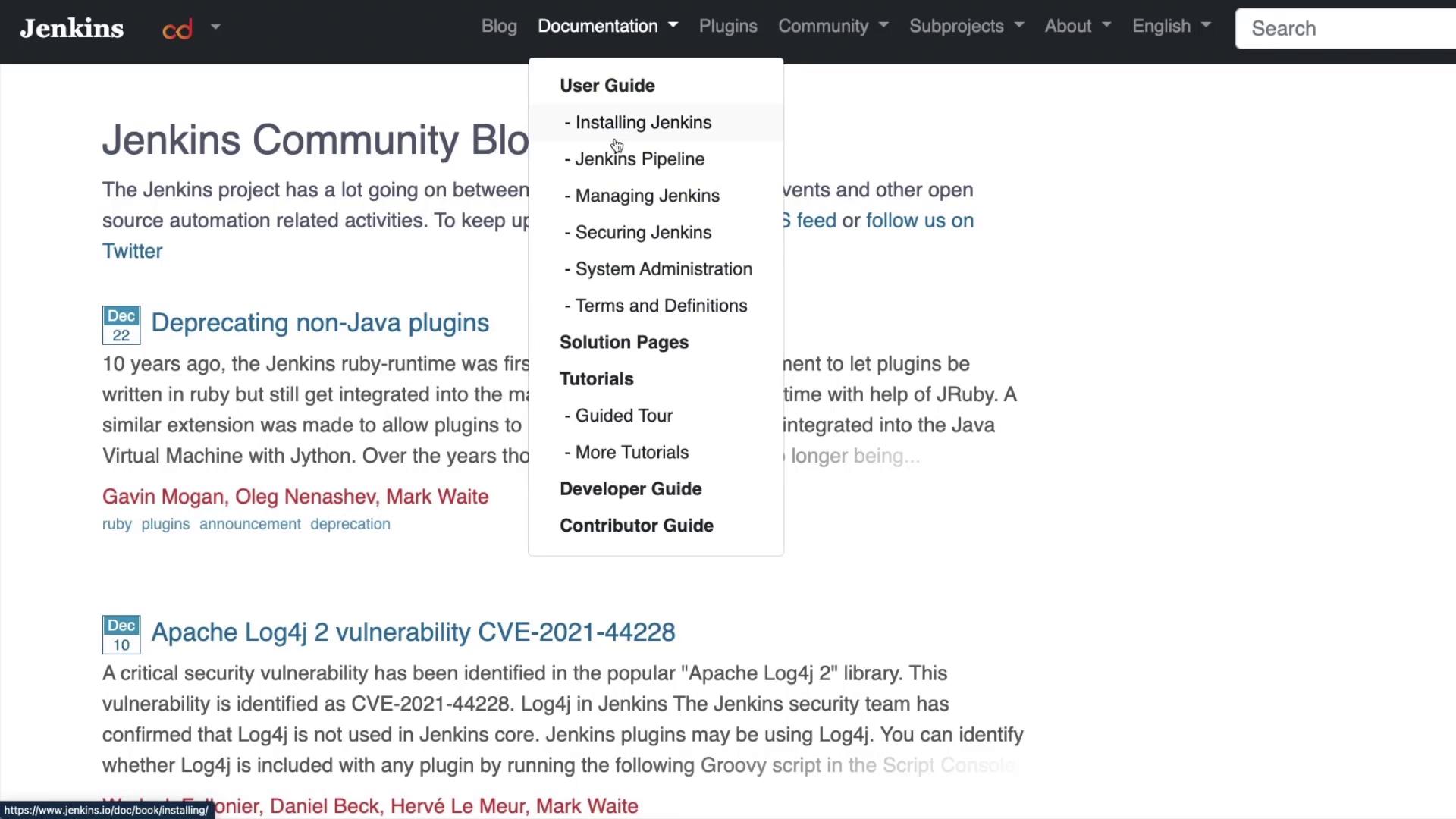
When exploring Docker installations, the documentation details prerequisites, OS-specific steps, and essential commands:
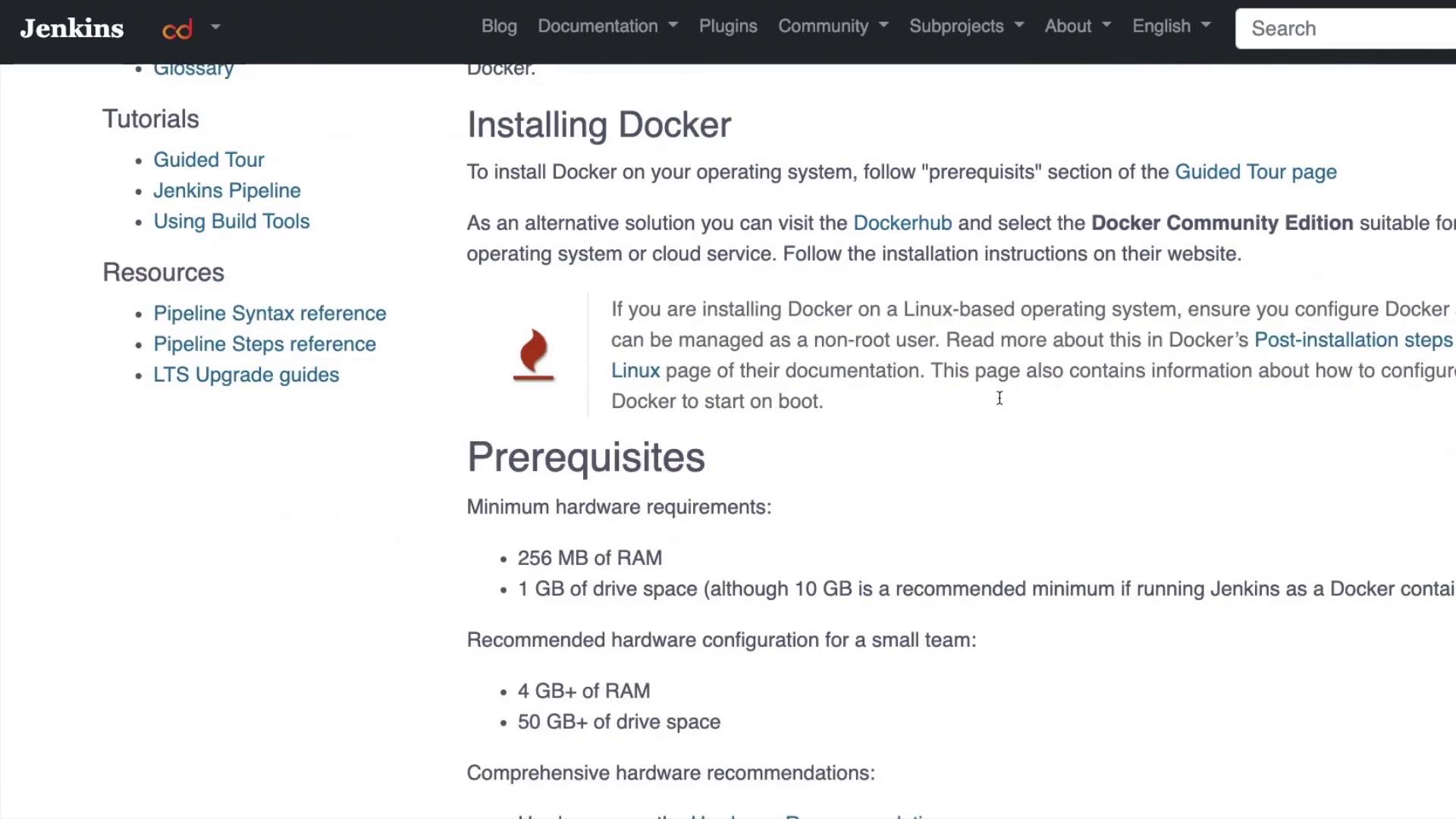
Plugins
Jenkins plugins extend the server's capabilities by integrating with external systems. For example, searching for "Azure" in the plugins section reveals a variety of options that support Azure CLI, Azure App Services, Key Vault, and more—ensuring seamless automation within the Azure ecosystem.
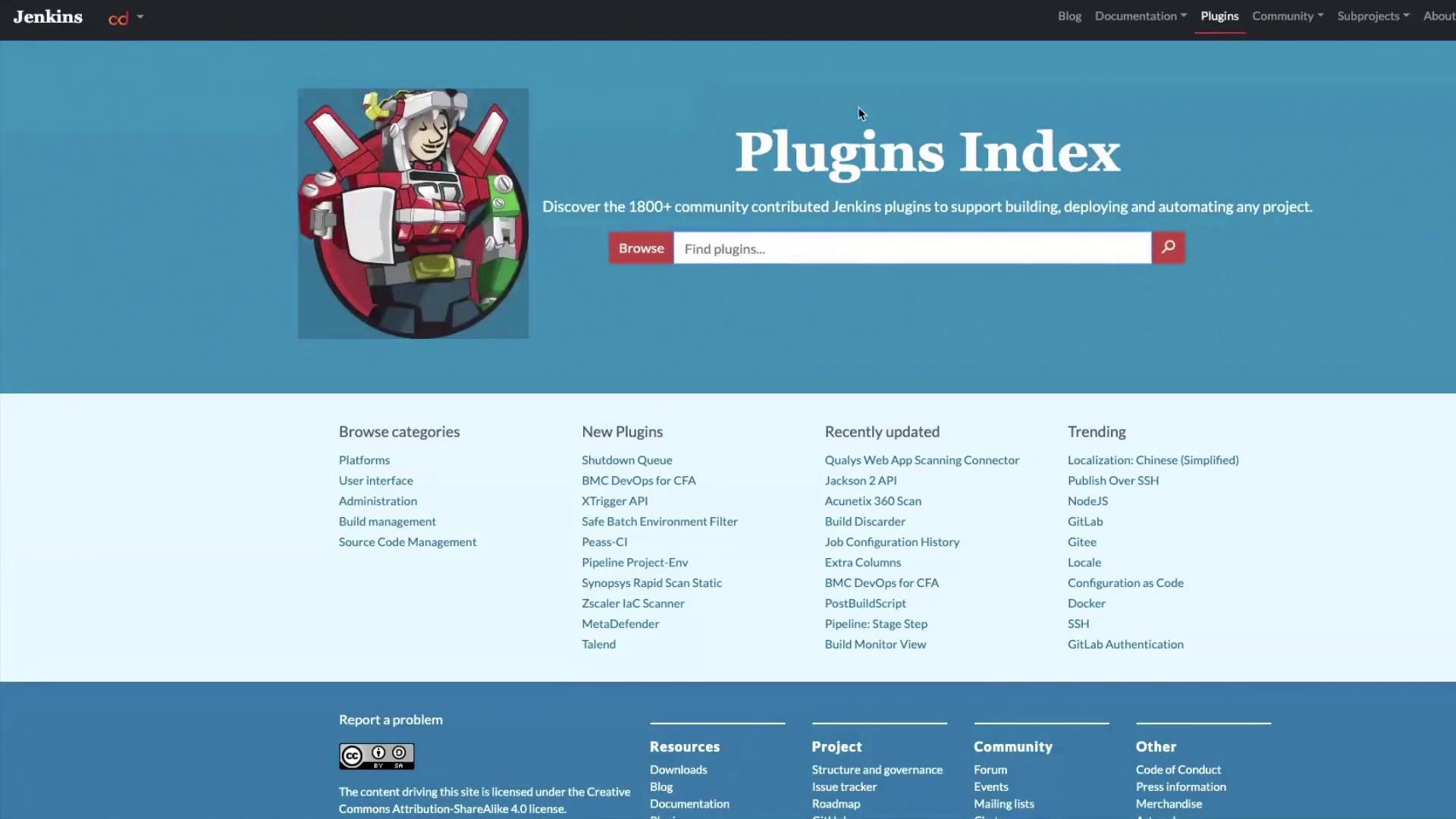
Specific results for Azure-related plugins include:
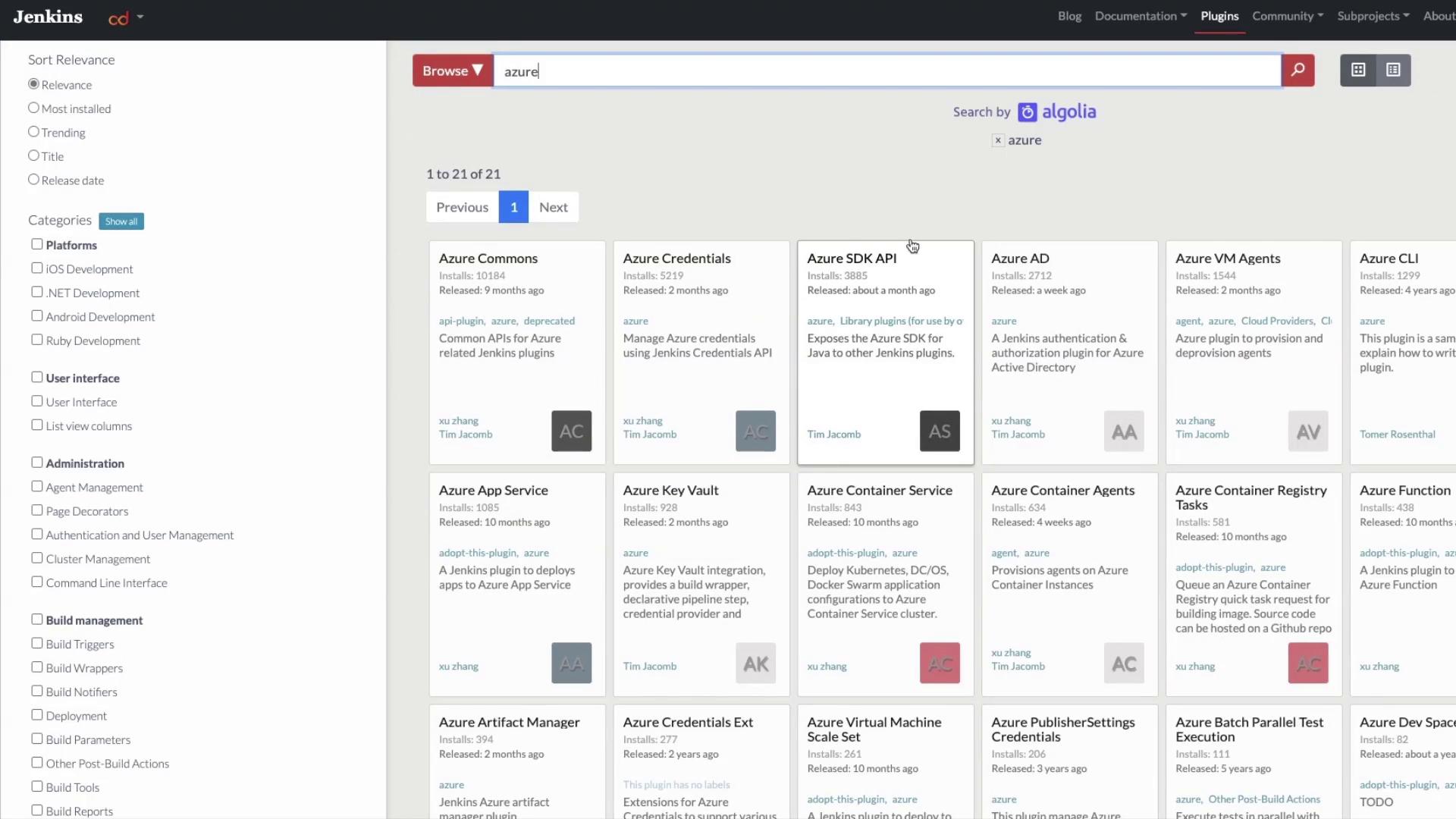
These integrations are key to optimizing your cloud-based automation processes.
Community and Subprojects
Jenkins thrives on a vibrant community of users, developers, and contributors. The ecosystem includes regular meetups, collaborative code contributions, thorough testing, and extensive documentation that facilitates knowledge sharing.
The website also highlights several subprojects:
- Jenkins Configuration as Code
- Jenkins Area Meetups
These initiatives offer additional resources and foster community engagement, providing ample opportunities to connect and contribute.
Additionally, the website navigation features dedicated sections for security updates, press releases, and a roadmap outlining future enhancements. This comprehensive resource hub ensures you find all the information needed to fully leverage Jenkins.
Conclusion
Whether you’re aiming to boost your CI/CD pipeline or exploring automation tools, Jenkins offers an exceptional platform for innovation. Visit jenkins.io for detailed documentation, a wide array of plugins, and active community discussion to further advance your skills.
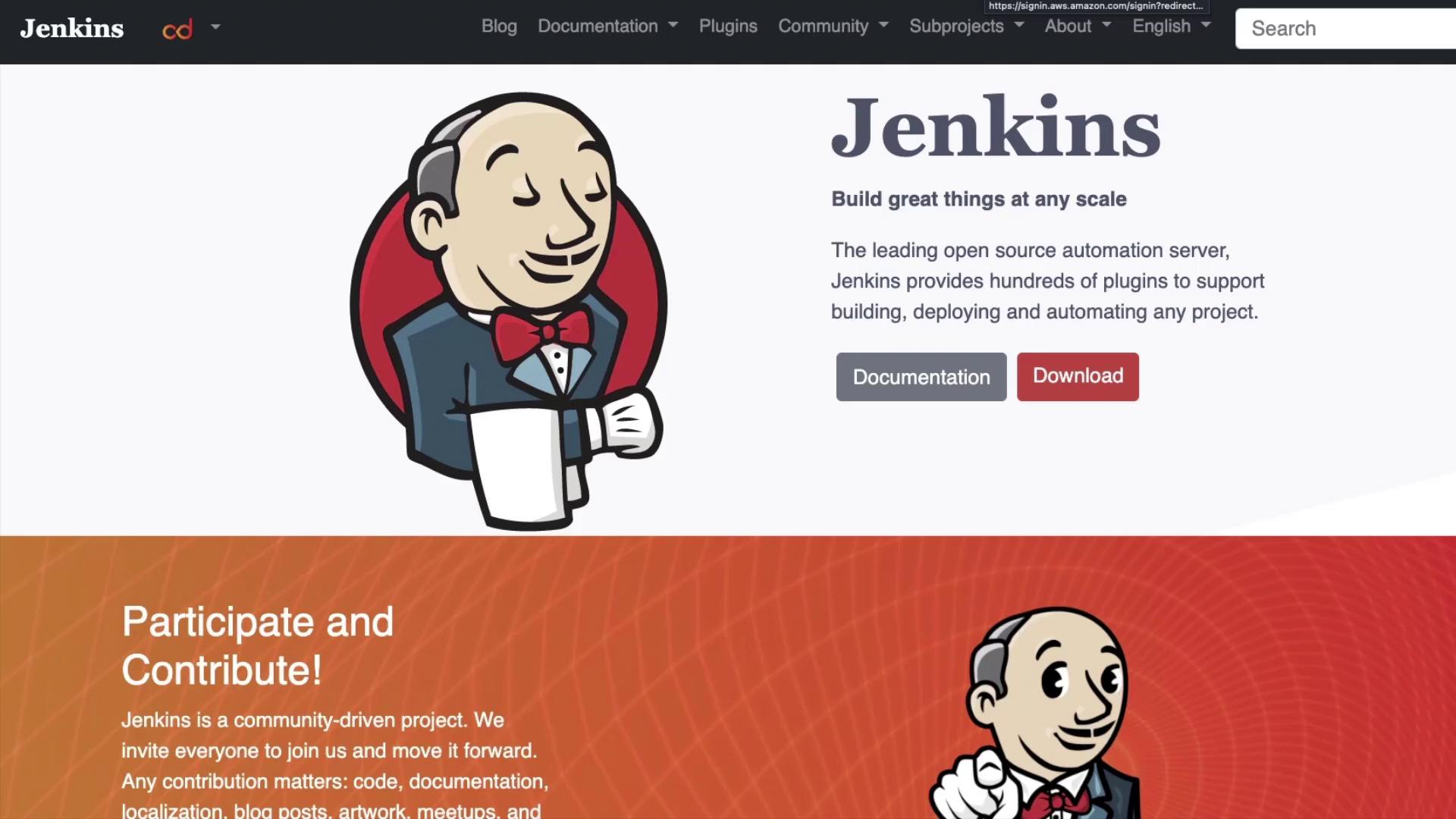
Happy automating, and see you in the next article!
Watch Video
Watch video content